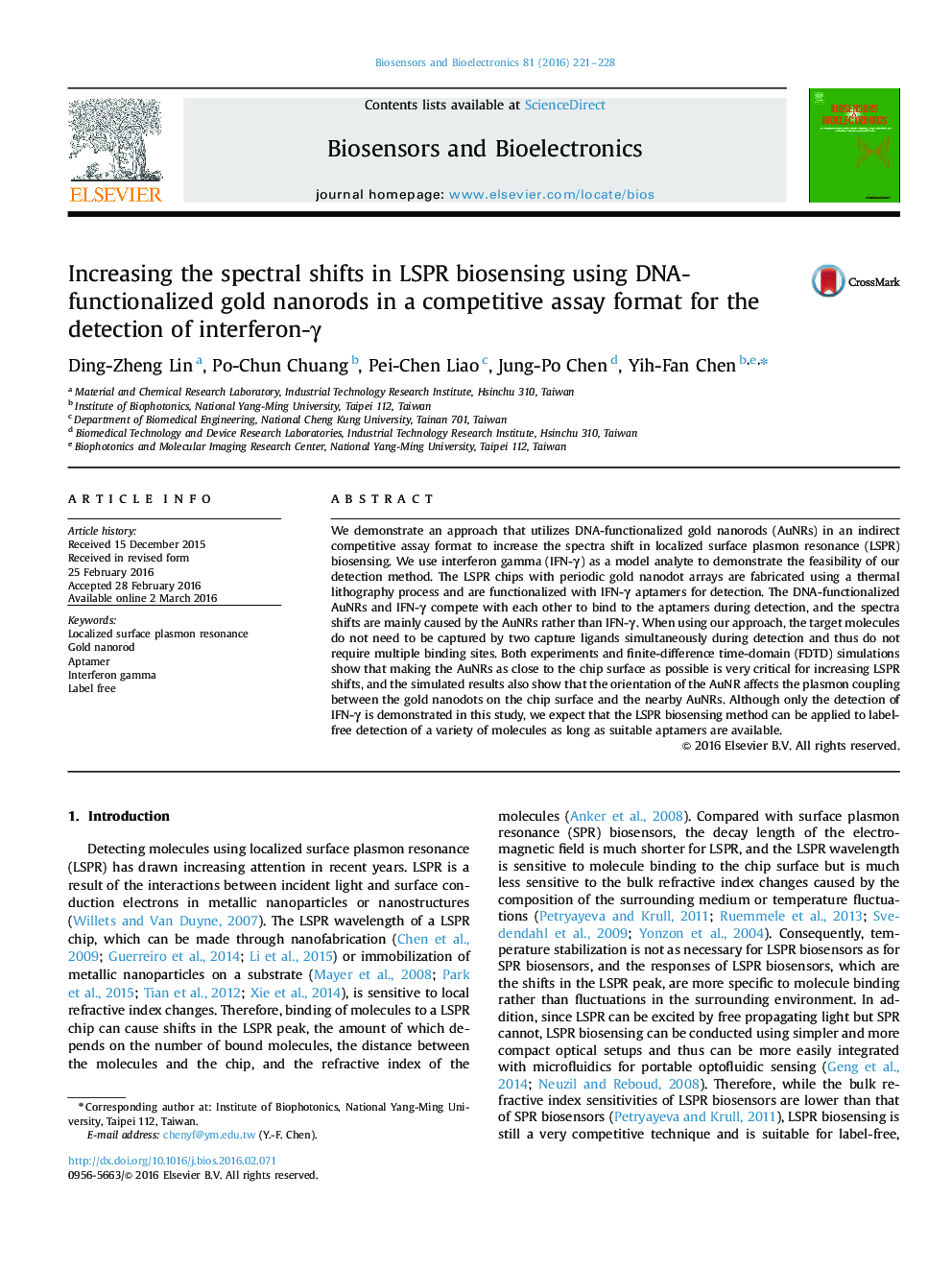| Article ID | Journal | Published Year | Pages | File Type |
|---|---|---|---|---|
| 7230561 | Biosensors and Bioelectronics | 2016 | 8 Pages |
Abstract
We demonstrate an approach that utilizes DNA-functionalized gold nanorods (AuNRs) in an indirect competitive assay format to increase the spectra shift in localized surface plasmon resonance (LSPR) biosensing. We use interferon gamma (IFN-γ) as a model analyte to demonstrate the feasibility of our detection method. The LSPR chips with periodic gold nanodot arrays are fabricated using a thermal lithography process and are functionalized with IFN-γ aptamers for detection. The DNA-functionalized AuNRs and IFN-γ compete with each other to bind to the aptamers during detection, and the spectra shifts are mainly caused by the AuNRs rather than IFN-γ. When using our approach, the target molecules do not need to be captured by two capture ligands simultaneously during detection and thus do not require multiple binding sites. Both experiments and finite-difference time-domain (FDTD) simulations show that making the AuNRs as close to the chip surface as possible is very critical for increasing LSPR shifts, and the simulated results also show that the orientation of the AuNR affects the plasmon coupling between the gold nanodots on the chip surface and the nearby AuNRs. Although only the detection of IFN-γ is demonstrated in this study, we expect that the LSPR biosensing method can be applied to label-free detection of a variety of molecules as long as suitable aptamers are available.
Related Topics
Physical Sciences and Engineering
Chemistry
Analytical Chemistry
Authors
Ding-Zheng Lin, Po-Chun Chuang, Pei-Chen Liao, Jung-Po Chen, Yih-Fan Chen,
